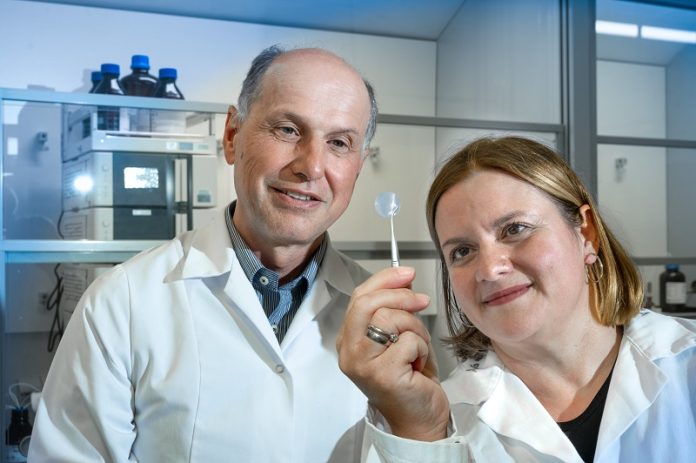
Chemists at Martin Luther University Halle-Wittenberg (MLU) have created a new type of gel that could significantly improve the safety and performance of lithium-ion batteries.
These batteries, which power everything from smartphones to electric cars, are known for their efficiency but also carry risks, particularly due to the flammable electrolyte fluid they contain.
The new gel aims to prevent leaks and reduce the chances of batteries catching fire or exploding.
The researchers published their findings in the journal Advanced Functional Materials.
Lithium-ion batteries are widely used because they charge quickly and are powerful. However, they also have a downside: the electrolytes that transport ions between the electrodes are highly flammable.
If a battery is damaged, this can lead to dangerous situations, such as fires or explosions.
Professor Wolfgang Binder, who leads the Macromolecular Chemistry Research Group at MLU, highlighted the importance of finding ways to make these batteries safer.
The team at MLU developed a polymer that can be placed inside the battery cell, where it binds the electrolyte to the gel-like substance.
This gel allows the ions to move freely between the electrodes, maintaining the battery’s functionality. Dr. Anja Marinow, a chemist at MLU, explained that the gel combines the best qualities of liquids, such as high conductivity, with the thermal stability and durability of polymers.
While gel batteries have been used before, such as in motorbike starter batteries, using them with lithium-ion technology is a new frontier. The main challenge is that in traditional lithium-ion batteries, the liquid electrolytes create a stabilizing layer on the electrodes during the first charge.
This layer is crucial for the battery’s performance and longevity.
The researchers had to rethink the design to make the gel electrolytes work effectively. They overcame this by adding an ionic scaffolding to the polymer’s molecular structure, allowing the necessary layer to form.
Initial tests in the lab show promising results. The new gel not only improves safety by reducing the risk of fire but also enhances the battery’s performance and lifespan.
Traditional lithium-ion batteries can become unstable at around 3.6 volts, but the new gel remains stable even at over 5 volts, according to Professor Binder.
Sustainability is another key focus of the research. The gel is designed to be easily recyclable, making it more environmentally friendly. However, before this new technology can be produced on a large scale, more long-term studies are needed to confirm its effectiveness and safety over time.
The research is part of the “BAT4EVER” project, which involves universities, research centers, and industrial partners from several European countries, including Germany, Belgium, and Italy.
The team plans to continue their work, particularly in exploring ways to make the gel even more sustainable.
This effort will be supported by the “European Center for Just Transition Research and Impact-Driven Transfer (JTC),” a new initiative at MLU focused on developing solutions for structural changes in regions like Saxony-Anhalt, particularly in areas like the circular economy and social innovation.
This innovative gel represents a significant step forward in making lithium-ion batteries safer, more efficient, and more sustainable.



